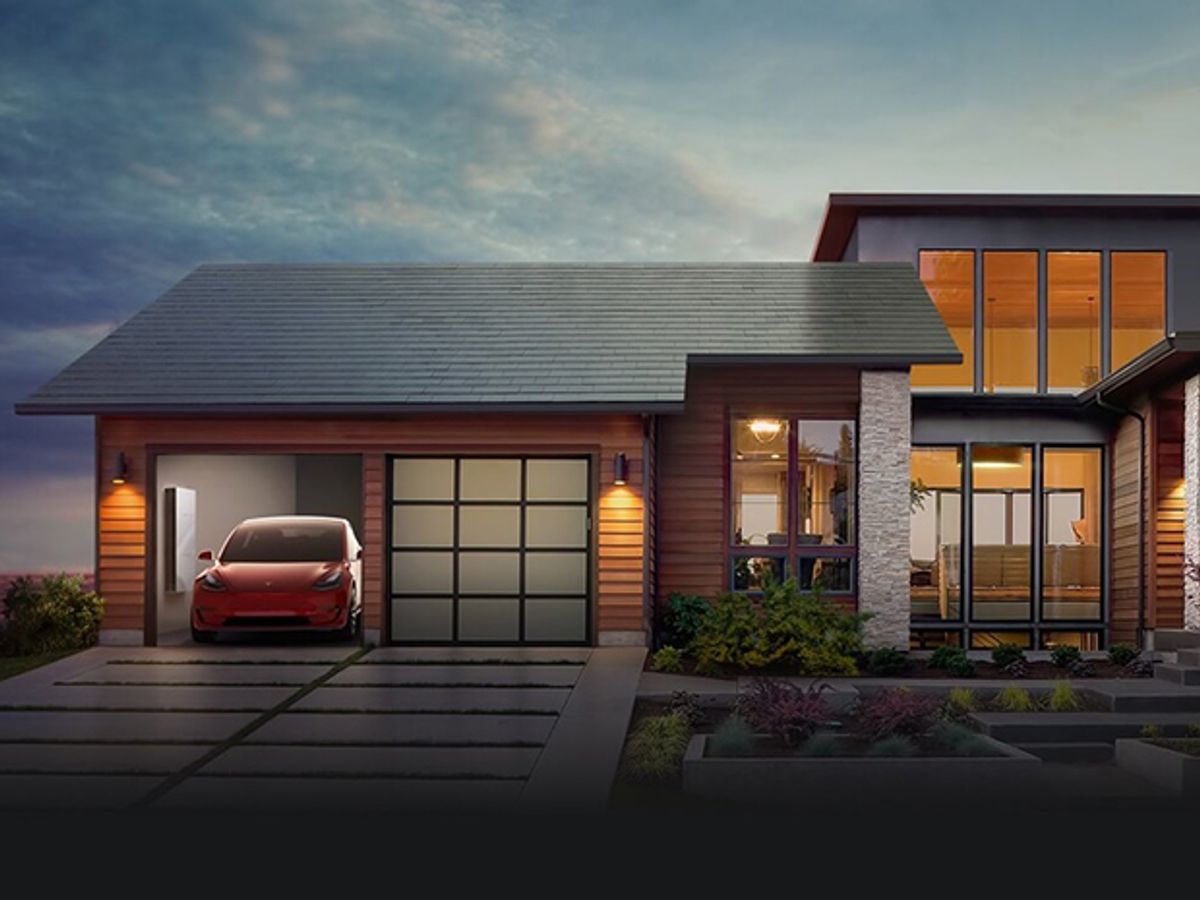Last week, Tesla—best known for its electric vehicles—announced its latest product: roof tiles with built-in solar cells. To succeed where other companies have failed, engineers say they must strike a delicate balance among cost, aesthetics, safety, and performance.
Widespread adoption would yield clear environmental benefits, of course. Solar power could be a way to lower carbon dioxide emissions and combat global warming, Tesla CEO Elon Musk said in a presentation. Musk sees solar roofs as part of his plan for running the world on clean, sustainable energy.
Yet Ronnen Levinson, a mechanical engineer at Lawrence Berkeley National Lab who studies ways to keep roofs cool, points out that “Tesla isn’t offering a new idea.”
In the past, solar power has had mixed results in the United States. Years ago, the Obama Administration supported the solar power company Solyndra, which went bankrupt in August 2011. Dow Chemical recently tried a solar shingles project that it shut down in July.
Tesla declined to comment for this story. Former Solyndra CEO Brain Harrison and Greg Bergtold, a business advocacy director at Dow Chemical, also declined to comment.
The discernible difference with Tesla’s photovoltaic roofing material, Levinson says, is that the company will offer integrated tiles. Instead of buying a roof, paying for workers to install it, then buying new solar panels and paying for extra labor, you can consolidate the cost--which could be cheaper. Musk said there are about 4 to 5 million new roofs in the United States every year, with more worldwide, so there is a market.
“Over time, every house would become a solar house,” Musk said.
During the presentation, Musk unveiled solar-cell glass tiles that could integrate with Tesla’s new Powerwall 2 battery as well as electric cars. TechCrunch reported that Musk claims the new roofs would last two to three times as long as typical 20-year-cycle roofs and be more impact resistant.
The marketplace challenges this product faces, Levinson says, are a mix of different factors: where you are, how much local electricity costs, whether you are buying a new home and new roof or need to replace a worn-down roof, and what the solar availability is. If you’re away from home during the week and only use electricity on the weekends, then storing electricity might not be practical. Also, not all states and utility companies have measures in place that allow homeowners and businesses to sell their excess solar energy, negating what would otherwise be an additional financial benefit.
Angèle Reinders, an industrial design engineer at the University of Twente in Enschede, Netherlands, works on integrating photovoltaics into infrastructure. She says consumer acceptance might also be difficult to get.
“If it’s affecting their building or their daily behavior, people are usually quite reluctant to adapt to that new technology,” she says.
In terms of performance, she wondered why Tesla doesn’t specify what technology the solar cells use or their tested efficiency—Musk has claimed that they achieve 98 percent of the efficiency of traditional solar panels. “I would like to talk with Elon Musk and ask him personally,” says Reinders. “You can’t put something on the market and not say what sort of technology’s in it,” she says.
Rodrigo Ferrão de Paiva Martins, a materials scientist at the Instituto de Desenvolvimento de Novas Tecnologias in Caparica, Portugal, is working on thin-film solar cells. He says it’s possible to get a high enough energy efficiency for market practicality.
He begs to differ with Musk, saying that solar shingles are inherently less efficient than traditional solar panels. He notes that they can deliver about 3 to 4 percent conversion efficiency. They become cost effective at about the 10-percent-efficiency mark, and there’s a way to get there by tweaking the manufacturing process.
When solar cells are made, they are typically put in a mold and heated, leaving tiny holes in the material. By heating the materials at higher temperatures than normal, these holes could be smoothed out, improving efficiency.
Levinson, however, pointed out that efficiency can be a misleading way to think of the cost effectiveness problem—because it is a product of several variables such as location and the local price of electricity.
There could also be various technical and safety challenges.
Reinders says that glass would not be the most insulating material for cold climates and stressed that there would be a tradeoff between performance and the need to adhere to building code requirements. In the Netherlands, for example, there are rules that spell out what roofing material must be in terms of fire resistance as well as being non-toxic, durable, and resistant to erosion.
Bjørn Petter Jelle of the Norwegian University of Science and Technology and SINTEF Building and Infrastructure in Trondheim--who is investigating resilient solar cells--says it’s important that the new roofs are resistant to harsh weather conditions such as snow, ice, wind, rain, and ultraviolet radiation.
Also, there is a tradeoff between aesthetics and performance. Jelle knows of a man in a city outside of Trondheim who bought curved Chinese solar panels to match the homes of his neighbors, even though they were less efficient than flat panels.
Levinson says it remains to be seen whether the Tesla product will succeed, but Reinders says “the timing is really well done” with respect to market readiness.
There’s at least one buyer. Don Weidner, a Tesla Model S owner and founder of Formidable Ventures, says “I’m blown away by how good they look.”
He says he just moved into a new house in 2015, but assuming Tesla lives up to Musk’s promise regarding the cost for new roofs, “the very next time I move or build or need a roof, I would absolutely” buy one.



